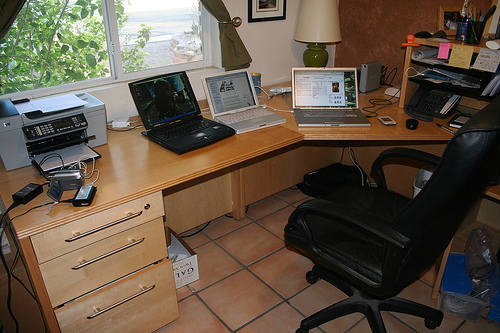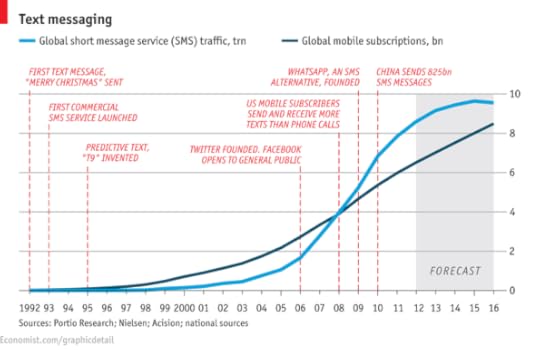Dan Pontefract's Blog, page 51
April 3, 2013
Puppetry of the Meanest
I’m fed up with them.
In 2006, Sarah J. Tracy, Pamela Lutgen-Sandvik and Jess K. Alberts published an influential paper entitled “Metaphors of Workplace Bullying: Nightmares, Demons, and Slaves: Exploring the Painful” in the Management Communication Quarterly.
In it the authors note:
Based on qualitative data gathered from focus groups, narrative interviews, and target drawings, the analysis describes how bullying can feel like a battle, water torture, nightmare, or noxious substance. Abused workers frame bullies as narcissistic dictators, two-faced actors, and devil figures. Employees targeted with workplace bullying liken themselves to vulnerable children, slaves, prisoners, animals, and heartbroken lovers.
I hope you weren’t drinking tea when you read that as it might now be all over your laptop or device.
Seven years later, I’m not all that certain our workplaces have completely eliminated – or even partially eliminated – workplace bullying.
To me, it’s another term for ‘command and control’.
Leaders who believe it’s their managerial right to flash the “I have a more senior title than you” card in favour of getting a decision to go in their favour are in fact corporate bullies.
Leaders who poach internal employees from your team without being proactive and discussing the opportunity or situation in advance with you are corporate bullies.
Leaders who ridicule or berate employees in open meetings – whether on a conference call or face-to-face – are corporate bullies.
Leaders who make impossible demands on deadlines, who set up their staff for inevitable failure, are corporate bullies.
Leaders who take credit for the positive results an individual or team created without said leaders involvement, are corporate bullies.
I’m in the midst of writing the second book. You can see where this is going.
Corporate bullying is a problem. We might coin these types of leaders as ‘Puppetry of the Meanest’.
Related Posts:The Mysterium Tremendum LeaderFacebook Bullying: An Open Letter to Zuckerberg, Schrage…My Network is my Net Worth – Part IIVirtual Worlds in an Organization are not a Time Waster (andThat Decision Is Above My Pay-Grade
April 2, 2013
Did I Just Spam My Entire LinkedIn Network?
On the afternoon of Sunday, March 24, 2013 I sent a generic email to my entire LinkedIn network.
Close to 1800 people received this email. Its overarching intent was to ‘ask’ for their support. (click here to read it)
As some of you might know, I recently published my first book. Excited doesn’t begin to describe how I feel about both the book and becoming a rookie published author. My Dad told me a story once when I was a wee lad about his aspirations to become either an author or a journalist. Back in the day, and the day being the 1950′s in England, my father wasn’t given the choice to choose his career. His own father — the town mayor no less — informed my Dad he was to become an electrical engineer and to forget about a career using Gutenberg’s device of wonder.
Of course when it was time for me to decide what to do with my life, my father acted as a sounding board not the actual speaker of selection. He was a true ‘guide on the side’ not a ‘parental drone with a megaphone’.
Which brings me back to my decision to release an email to 1800 LinkedIn contacts informing them of the availability of Flat Army: Creating a Connected and Engaged Organization.
I debated whether to do it. I truly did. I knew there would be people who simply deleted it and said to themselves, “whatever.” I took that risk. I knew there would be people who might even get annoyed with what they might brand as ‘spam’. I also hoped there would be those that saw the intent of the message which was to simply consider my ask to make others aware of the book.
I got a truckload of positive emails, texts, DM’s and even phone calls and face-to-face high fives to last a lifetime. Many from people I haven’t directly heard from in years.
Since the beginning of 2013, I have tried to do things ‘differently’ with the launch of the book. For example, I created a self-made video for each of the 13 chapters — and released one per week — as a way to provide additional insight into the book. I forbid the back cover to include any recommendations or quotations from others. I didn’t even want an official launch party.
There are reasons to my author idiosyncrasies.
And then on March 24th I sent a direct email to anyone in my LinkedIn network.
There were other actions planned — including press releases / interviews / articles / reviews — but I still believe the direct email to my LinkedIn network was an act of communication and not SPAM.
But there were going to be some who disagreed with me. I’m not naïve; it was inevitable.
This included an individual who is both in the acknowledgments and showcased in the book itself. I consider this individual a true interlocutor and an intellect.
The email I received from this individual started out, in my opinion, as an attack but it swiftly and gently moved into a “here is what I’ve learned from my experience” to a “I think you can do better” denouement.
The attack was as follows:
I feel that spamming me and others with a generic message sent via LinkedIn, in the hopes of getting help with spreading word about the book is the wrong tone considering you’re promoting a body of work you’ve created that dares to help organizations understand “social” for use inside the organization. As an act, this message feels so much like a violation of that.
At first, I said to myself, “Where is the unLinkedIn button” but then I read on.
The email concluded with the following:
I don’t think you really want people to spread awareness of your book. I think you want to build a motivated, self-directed army of fans who feel a kinship with what you have to say, Dan, find it empowering and useful… and ultimately see it as a vehicle to move whatever big rocks they have forward. Don’t give into the seduction of what’s easy. Get personal, where it’s messy, complicated and hard.
And it’s there where I really appreciated the advice, feedback and experience.
For those that believed I may have overstepped email boundaries with a direct yet generic email informing you of the release of Flat Army and asking you to inform your network, I don’t apologize.
That’s right, I don’t.
I asked my entire LinkedIn network for help. I see nothing wrong with that. Aren’t we connected in the first place to support one another?
LinkedIn, at least in my opinion, is the new business card networking machine in our professional world and I would have done the same in 1995 if LinkedIn were around then.
Where I erred, however, was the cadence in which I sent my email communication notices.
What you don’t know is that I had always intended to send a personal note of appreciation and thanks to everyone (and there are over 150 people I signal out in the acknowledgments) a few weeks into the launch of the book. My rationale was to give them some time to see I actually put them in the book versus spoiling the surprise.
So, in rookie author honesty, I think I messed up with those in my network whom actually make up my ‘direct professional ties’. For even sweeter irony, Chapter 7 — The Participative Leader Framework — is written with the point of direct network ties throughout. Ouch.
Those direct and personalized notes were always coming but I now agree with my friend who sent me the response which, in part, you read above. I should have sent those notes earlier and personalized the launch of Flat Army for this important audience.
I even sent the acknowledgments to Jane Bozarth in advance of the launch for her to read only to realize I forgot to include her. It turns out “to err is human” is one of my finer qualities or I’m simply an arse.
 But for the rest of my LinkedIn network … my excitement was (and continues to be) over the moon hence my generic email to you inquiring about an ask. If there is a better way, I’m all ears.
But for the rest of my LinkedIn network … my excitement was (and continues to be) over the moon hence my generic email to you inquiring about an ask. If there is a better way, I’m all ears.
My Dad never had the chance to be an author.
Now that I am and I have vanquished what I believe was a parental mistake on the part of my Granddad, I couldn’t contain my excitement. Equally important was my belief in the thesis of the book that I was comfortable enough asking 1800 people for their help. My ask remains my ask. My thanks to the many who did something about my ask. (Flat Army reached #3 in Canada and #8 in the USA last week in the Amazon Kindle charts for Leadership. There is no way that happens unless the network is spreading the news.)
But, as I often say, Ancora Imparo.
Related Posts:My Network is my Net Worth – Part IIAnnouncing the Full Book Cover Jacket of Flat ArmyThe 10 Winners of Flat Army Copies Are …I Unfriended You On Facebook. Are We Still Friends?Wordle Graphic of Flat Army
April 1, 2013
The 10 Winners of Flat Army Copies Are …
 As promised, it’s April 1, 2013 and I’m taking the opportunity in this post to announce the ten winners who receive copies of Flat Army: Creating a Connected and Engaged Organization.
As promised, it’s April 1, 2013 and I’m taking the opportunity in this post to announce the ten winners who receive copies of Flat Army: Creating a Connected and Engaged Organization.
If you recall, I asked people to surface their beliefs concerning “the biggest culture issue facing our organizations today and why?”
There were 39 responses. Wow.
Judging was not easy.
I’d like to thank everyone for participating. Your passion and consternation mixed with analysis and detail was both insightful and at times alarming. I wish I could give each of you a copy.
The winners … with a brief explanation as to why are as follows:
@Cindy Jensen
Your use of the word vulnerable was key. I too believe leaders need to manage (it’s unavoidable) but they need to be vulnerable … opening themselves up to this concept called humanity. Well done.
@Josh Alter
I believe you are spot on. Although I don’t think an all-face-to-face edict should be forced (ahem, Yahoo!) we need to find the proper balance between F2F and digital. It’s critical for the next few years.
@Rob
Your succinct entry caught my attention as did the point about inertia itself. It reminded of a quote I live by, “To improve is to change; to be perfect is to change often.” (Churchill)
@Jennifer Lee
Your comment was as though you’ve already read the book.
 Nicely written.
Nicely written.@Leisa Johnson
Resting on past success or the laurels of a good job will do nothing for the Flat Army organization of tomorrow. I enjoyed your point about complacency immensely.
@Erik Korsvik Østergaard
I couldn’t have said it better, “To acknowledge, understand and exploit the fact, that the network based organisation is far superior to the traditional one.”
@Steve
You really made me think about your argument of ‘tradition versus trust’. I hadn’t thought of it that way before. Thank you.
@Mark
You make a strong case for what I wrote in Chapters 2 and Chapters 3. Engrained past ‘management’ and ‘training’ practice needs to give way to the ‘connected leader’.
@Geoff
Wonderful point about time. It may take longer to collaborate and think, but in the end, it will result in a healthier result and organization.
@Stacey
You blew my mind away with the term ‘They’sayers’ and the argument depicted therein. I’d like to quote you in my next book if I can.
@Jeanette Cefre
Two thumbs up. A learning culture is essential in today’s Flat Army organizational quest, and is the thesis around Chapters 9 and 10.
Again, thanks to everyone for contributing. In doing so, you already demonstrated to me you are a Flat Army leader.
For those 10 names above, I have your email address and will forward them off to Wiley who will be in touch with you directly about shipping instructions.
Ancora Imparo
Related Posts:10 Free Copies of Flat Army … Participate to WinFlat Army: Chapter 10 Overviewflat army bookAnnouncing the Full Book Cover Jacket of Flat ArmyFlat Army: Chapter 9 Overview
March 29, 2013
A Personal Message of Thanks
A short, personal message of thanks one week after the release of Flat Army.
Related Posts:Flat Army: Chapter 11 OverviewFlat Army: Chapter 12 OverviewFlat Army: Chapter 10 OverviewFlat Army: Afterword OverviewFlat Army: Chapter 9 Overview
March 25, 2013
10 Free Copies of Flat Army … Participate to Win
 John Wiley & Sons, Inc. (the publisher) and I are giving away 10 free copies of my book Flat Army: Creating a Connected and Engaged Organization.
John Wiley & Sons, Inc. (the publisher) and I are giving away 10 free copies of my book Flat Army: Creating a Connected and Engaged Organization.
Hooray!
It wouldn’t be in my Flat Army conscience to simply give away the books without some form of collaboration, connection or participation.
Sorry.
To win a book – and yes, it will be shipped to you directly by Wiley anywhere in the world – write down your thoughts in the comment box below as it relates to this simple question:
What is the biggest culture issue facing our organizations today and why?
It doesn’t have to be about your organization specifically, if you work for one, and it doesn’t need to name names either. There is no length requirement to your response and you can only enter one comment to be eligible.
You can submit a comment up until March 31, 2013.
The 10 winners will be selected by me and announced in this space on Monday, April 1, 2013. (no it’s not an April Fool’s joke, I promise you)
I’ll enjoy reading the issues and your reasons why.
Related Posts:Download Chapter 1 for Free – Flat Army: Creating a…Announcing the Full Book Cover Jacket of Flat ArmyAnnouncing the Front Cover of Flat Armyflat army bookWordle Graphic of Flat Army
March 21, 2013
Do We Need Textpectations?
Seems like an innocuous question, right?
According to Portio Research, 7.8 trillion texts were sent in 2011 and 8.6 trillion in 2012. By 2016 they predict earthlings will send almost 10 trillion texts. That’s even more than the total number of complaints Yahoo! employees sent to their HR office this past February.
What’s the rule of thumb for answering a text? Is it immediate? Do you feel the urge to answer a text right away because you’ve set your phone settings to vibrate whereas other notifications — like email, Facebook,,etc. — are simply in your to do list queue?
Is there any psychology research behind our beliefs in texts versus other forms of digital communication?
Have you stopped reading because you’re now answering a text?
Research from Kansas University in 2012 suggested young adults weren’t addicted to texting rather they have developed a compulsion. If a text sat unanswered, after four hours it might be deemed useless thus creating the compulsion to answer quickly. I wonder if it’s similar to the delayed gratification ‘marshmallow’ experiment made famous by Walter Mischel.
Sorry for the white space, I had to answer a text.
As texting becomes the new email for many of us, do we need to think about textpectations? Why is it for many of us texts feel as though they have to be answered immediately? Perhaps we need to establish textiquette.
Or has the text already left the device?
Related Posts:I’m Not Scared of Email; I Developed a System called…Year Zero: The Future of Communication Skills in…How did you learn about #OBL? A series of questions.I Don’t Do GolfBosses Should Shift From Scroll to Swipe
March 18, 2013
Download Chapter 1 for Free – Flat Army: Creating a Connected and Engaged Organization
I’m proud to let you know Chapter 1 of my first book — Flat Army: Creating a Connected and Engaged Organization — is now available as a free download. The title of the Chapter is “The Mona is So Small!” (it makes more sense when you actually read the chapter)
If you missed it, I created a 90-second video outlining Chapter 1 as well.
I’d be delighted to hear your thoughts in this space. (aka … leave a comment)
If you’re interested to purchase the book, feel free to visit any of the online or onsite shops listed over here.
Related Posts:Flat Army: Chapter 1 OverviewFlat Army: Chapter 11 OverviewFlat Army: Chapter 12 OverviewFlat Army: Chapter 5 OverviewFlat Army: Chapter 6 Overview
March 15, 2013
Flat Army: Afterword Overview
The title of the Afterword is “In Collaborative Conclusion”
This 2-minute video snippet sees me (Dan Pontefract) describe the background to the Afterword of the book Flat Army: Creating a Connected and Engaged Organization.
This final vignette contains three special guest-star co-hosts. Who might they be?
Related Posts:Flat Army: Chapter 11 OverviewFlat Army: Chapter 10 OverviewFlat Army: Chapter 12 OverviewFlat Army: Chapter 9 OverviewFlat Army: Chapter 2 Overview
March 14, 2013
Flexible Working Works
 In a landmark 2007 paper published in the Journal of Applied Psychology called “The Good, the Bad, and the Unknown About Telecommuting: Meta-Analysis of Psychological Mediators and Individual Consequences”, authors Ravi Gajendran and David Harrison of the Department of Management and Organization at Pennsylvania State University dispelled the notion that working from home was bad for business or bad for employee morale.
In a landmark 2007 paper published in the Journal of Applied Psychology called “The Good, the Bad, and the Unknown About Telecommuting: Meta-Analysis of Psychological Mediators and Individual Consequences”, authors Ravi Gajendran and David Harrison of the Department of Management and Organization at Pennsylvania State University dispelled the notion that working from home was bad for business or bad for employee morale.
It’s a paper I’m certain the internet company Yahoo! failed to read when they recently announced all 12,000+ employees had to begin working from Yahoo! offices 100 percent of the time effective June 2013.
What did Gajendran and Harrison prove?
Through the review and analysis of 46 individual studies that featured 12,883 employees, these researchers determined working from home demonstrated seven positive outcomes:
Employees had greater control over their environment proving causality to increased results and productivity
Due to less face-to-face interaction between the manager and the employee, the quality of their interactions actually increased
The balance of life and work – allowing for the flexibility of life’s curveballs and family matters – extended their wishes to do a good job
With an increase in autonomy came an increase in job retention and satisfaction
Stress was reduced due to a decrease in commuting, money on lunches and business attire
Commitment to the company increased – what we might call a likelihood to stay – due to the work from home option
Distractions decreased and performance increased whilst managers shifted their adjudication on results versus face-time
 I’ve noted previously that I’m a ‘Corporate Floater’ working wherever the wind takes me. This geographic flexibility sees me working from home roughly 50 percent of the time. The other 50 percent sees me in meeting rooms, hoteling stations, hotels, airplanes, lounges and coffee shops. (I prefer an extra-hot double shot 8oz decaf latte if you must know) Through my travels I am constantly plugged in, constantly in touch with everyone and anyone.
I’ve noted previously that I’m a ‘Corporate Floater’ working wherever the wind takes me. This geographic flexibility sees me working from home roughly 50 percent of the time. The other 50 percent sees me in meeting rooms, hoteling stations, hotels, airplanes, lounges and coffee shops. (I prefer an extra-hot double shot 8oz decaf latte if you must know) Through my travels I am constantly plugged in, constantly in touch with everyone and anyone.
When I think back to the research of Gajendran and Harrison, I often smile. Why? Because for me personally, they are absolutely right. If I was shackled to a desk or an office 100 percent of the time, there is not a chance I’d be as motivated, engaged or productive as I am in my life today. I might not even use the collaborative technologies available to me as much as I do today.
I am a direct leader of 25 people strong and an indirect leader in an organization of 40,000 across many time-zones and countries. If I didn’t have the flexibility to work from home I don’t believe I’d be the leader, employee or performer I am today. As the Head of Learning and Collaboration I’m very interested (obviously, you might say) in employee engagement. Our team has an employee engagement score of 96 percent. Each of the team members has an opportunity to work from home whether it’s a little or a lot. Each of those employees use our collaborative technologies to be productive and to get their objectives accomplished. Employee engagement across my entire organization is 80 percent and we’re on a quest to see 70 percent of the organization working from home on a part or full-time basis by 2015. Did I mention we had over five million social interactions in 2012 through our collaborative technologies?
 I personally believe – and can attest to – the seven positive outcomes outlined by the research above ring true for me, the team I’m a part of as well as the organization I’m employed by. There are many ingredients to creating an engaged team and/or workforce, but one that is crucial is offering a flexible work environment coupled by collaborative technologies.
I personally believe – and can attest to – the seven positive outcomes outlined by the research above ring true for me, the team I’m a part of as well as the organization I’m employed by. There are many ingredients to creating an engaged team and/or workforce, but one that is crucial is offering a flexible work environment coupled by collaborative technologies.
Collaborative tools like virtual worlds, instant messaging, webcams, telepresence, micro-blogging, blogging, video/photo sharing in addition to good ole email helps reinforce connections to continue and productivity to swell. If you believe a ‘work from home’ program can be successful without at least some of the aforementioned tools, you are as misguided as whoever accepts hosting duties at the next Oscars.
It is in stark contrast to not only the recent decision made by Yahoo! but by countless organizations who continue to believe a 100 percent work-from-the-office strategy is better for morale, productivity, innovation and collaboration.
And let us not forget the corporate bottom line. In 2009, Cisco reported its telecommuting and flexible work environment not only increased productivity and job satisfaction, it saved the company $277 million.
Make it your mission to help drive flexible working in your work, and use it as an opportunity to build out your set of collaborative technologies.
At that point, you can cheekily say to yourself, “ya, who is working from home today?”
Originally posted to IBF Forums.
Related Posts:Going Forward to the Past: Management Yahooliganism &…I Am A Corporate FloaterThe Social C-SuiteGive Piece a ChanceYa, I Cry at Work. Do You?
March 13, 2013
Flat Army: Chapter 12 Overview
The title of Chapter 12 is “The Culture Quest of Flat Army”
This 90 second video snippet sees me (Dan Pontefract) describe the background to Chapter 12 of the book Flat Army: Creating a Connected and Engaged Organization.
How do you actually roll out ‘Flat Army’ in your team or in your organization? Chapter 12 focuses solely on this aspect.
Related Posts:Flat Army: Chapter 11 OverviewFlat Army: Chapter 10 OverviewFlat Army: Chapter 9 OverviewFlat Army: Chapter 5 OverviewFlat Army: Chapter 6 Overview








